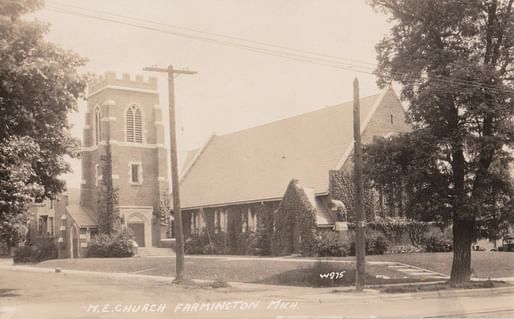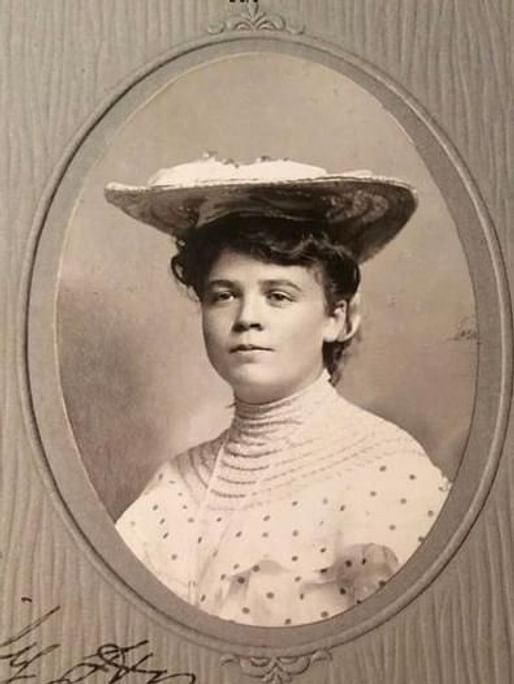

Emily Helen Butterfield, born August 4, 1884, was the first licensed woman architect in Michigan.
Butterfield grew up in Detroit with a love of watercolor painting, and eventually studied architecture at Syracuse University, where she was a founding member of the Alpha Gamma Delta sorority. After graduating in 1907, Butterfield and her father, Wells D. Butterfield, established the architectural office of Butterfield and Butterfield in Detroit.
The pair practiced together and specialized in the design of churches while also leading the design of the Oaklands planned community in Farmington Hills outside of Detroit. The younger Butterfield designed many houses in the development, according to the City of Farmington Hills Historic District Commission, mainly in the Colonial Revival style. Butterfields thoughtful bungalows are notable for their two-story design and for the cleaver inclusion of evocative stylistic architectural elements that lent the homes formal interest and material richness.
Butterfield and her father also designed the community’s First United Methodist Church, a Neo-Gothic style, L-shaped building marked by a stepped tower and pointed stained glass windows. According to various reports, Butterfield and Butterfield helped usher in a transformation in church design, generally speaking, by creating lively, multi-purpose buildings that helped position church buildings as full-fledged community centers, in contrast to what had been more formal and uni-functional organizations previously.

Skilled in business as well as design, Butterfield used the connections she had developed with other powerful women through her sorority activities to land commissions for affiliated buildings, like chapter houses, on top of more conventional client-driven work. Aside from her sorority activities, Butterfield also helped found the Detroit Business Woman's Club in 1912, an organization that according to the Michigan Women's Hall of Fame, was the first professional woman's club in the United States
During the Great Depression, when architectural commissions were hard to come by, Butterfield became a writer to help pay the bills. She published volumes that include a book on college fraternity heraldry, as well as a Young People’s History of Architecture illustrated with sketches Butterfield made while accompanying her father on travels throughout Europe.
Ultimately, Butterfield is credited with the design of 26 churches, as well as a number of apartments, homes, factories, schools, and other building types, including a camp for underprivileged children Butterfield designed for the Alpha Gamma Delta Fraternity in Jackson, Michigan in 1904. Butterfield served as postmaster for Neebish Island, Michigan after retiring from architecture later in life. She died in 1958, but her work lives on, and increasingly, is being celebrated.

Architects and preservationists Ken and Melody Klemmer, for example, are two fans of Butterfield’s work. The pair live in and are restoring Butterfield’s Edward Beals House, a fantastical “Storybook Tudor”-style home listed on the Michigan Register of Historic Places that is also considered a contributing structure to the Farmington Hills Historic District. The two-story home is built out of hollow clay tile modules, plaster, and stucco, and features a whimsical asphalt tile roof. The home's distinctive rolled roof eaves and decorative half-timbering were designed to evoke what was at the time a popular residential architecture style in Los Angeles's recently developed Hollywoodland neighborhood.
The 1925 home was designed and built for Edwards Beals, president of the Great Lakes Land Corporation, the real estate developer that built the Oaklands 11-home subdivision. The Klemmers purchased the home in 2013 and have been restoring the structure ever since.
In the YouTube video below, Klemmer explains some of the difficulties and joys of the renovation with the Farmington Hills Historic District Commission.
No Comments
Block this user
Are you sure you want to block this user and hide all related comments throughout the site?
Archinect
This is your first comment on Archinect. Your comment will be visible once approved.